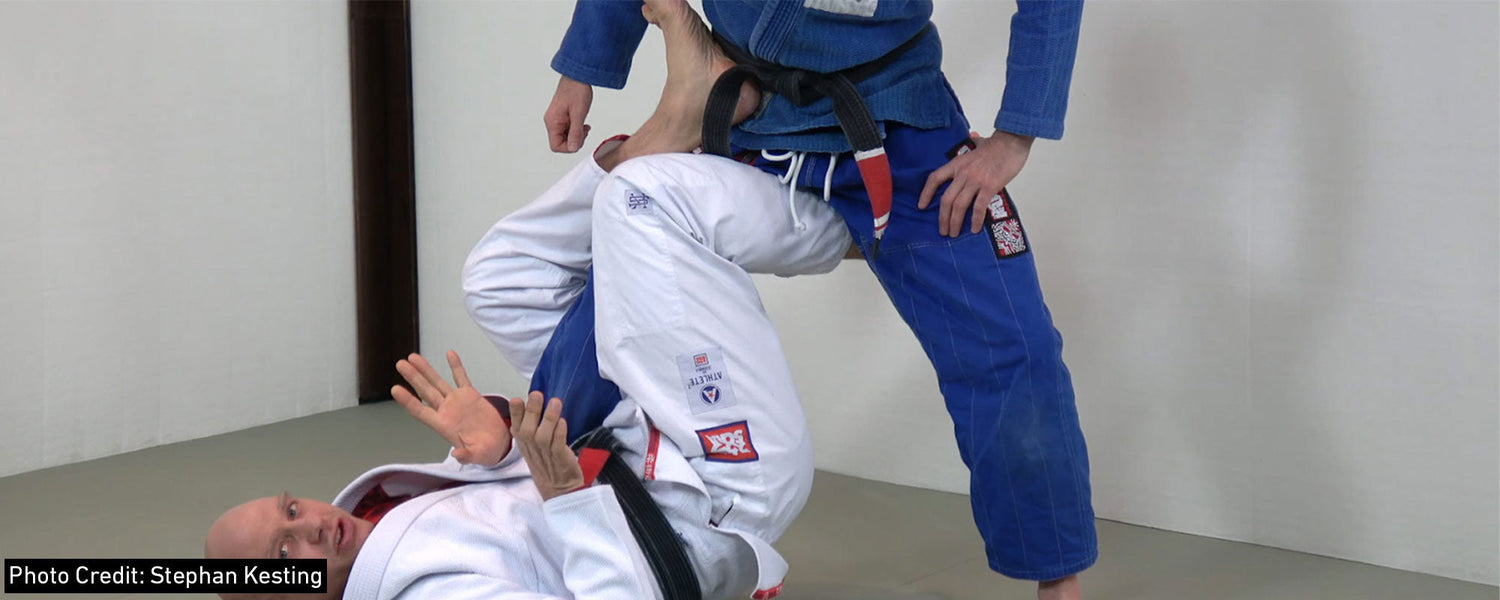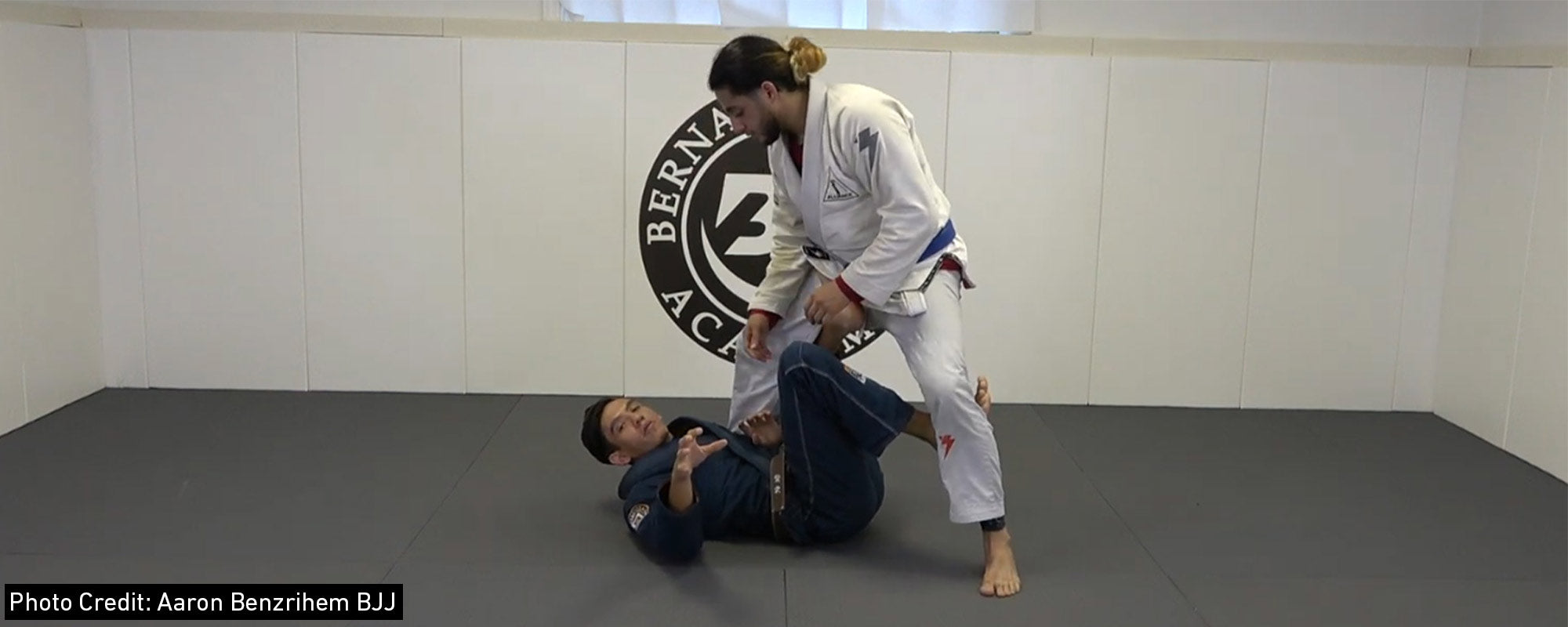Table of content
There are some unique BJJ techniques that are considered the best techniques, but still, BJJ athletes don’t learn them. The primary reason is that BJJ practitioners often find these techniques difficult to learn. These are also uncommon and not usual for BJJ athletes. So that’s why people don't focus on such techniques. This makes those techniques even more helpful. The more the technique is common, the more BJJ athletes will learn both attack and defense against that technique, and the lesser the chances that you will succeed in making that move or technique against your opponent. One example of such a unique and powerful technique is the JJ X-guard.
1. BJJ X-Guard
BJJ X-guard is the technique or move in Brazilian Jiu-Jitsu in which you control your opponent’s leg with your legs, creating an X-shape. You are lying on the ground with your back against your opponent standing. Your legs are entangling your opponent’s leg. It is considered a ground and open guard position. Your one arm is crossing over the opponent’s other leg. That arm controls your opponent’s leg. Your one foot is near your opponent’s hips in their front. Your other foot is behind your opponent’s knee.
2. Features of BJJ X-Guard
Following are some characteristic features of the BJJ X-guard that make it different and powerful from others;
You control your opponent’s leg with your legs.
Your legs create an X-shape.
You are lying on the ground with your back.
Your legs are entangling your opponent’s leg.
It is a ground position.
Your one arm is crossing over the opponent’s other leg.
Your one foot is near your opponent’s hips in their front. Your other foot is behind your opponent’s knee.
Your other foot is behind your opponent’s knee.
It is an open guard position.
You are beneath your standing opponent.

3. Advantages And Benefits of BJJ X-Guard
Following are some benefits and advantages of BJJ X-guard, which shows its significance in the Brazilian Jiu-Jitsu.
It helps you to disrupt your opponent’s balance.
It provides various opportunities for making sweeps and transitions against your opponent.
It helps you to submit your opponent in various ways.
It is a ground-dominant position.
It makes it easy for you to pass the guard.
You can use this guard to enter into other guards of Brazilian Jiu-Jitsu.
The ability of your opponent to move is hindered to a greater extent.
Your opponent remains in defense and can't make attacks on you.
Any BJJ athlete of any body size and strength can utilize this guard because of its dependability on position.
BJJ X-guard has many variations, making it a versatile technique that is suitable for everyone.

4. Types And Variations of BJJ X-Guard
BJJ X-guard comes with some variaitons and types. You can use the variation, which is easy for you. Following are the top five variations of BJJ X-guard;
4.1 Single Leg BJJ X-Guard
The first type we will discuss is single-leg BJJ X-guard (SLX). Normally, in BJJ X-guard, you control and trap both of your opponent’s legs. One leg with your legs and the other leg with your arm. But have you ever thought that you can control your opponent’s one leg, which will also be known as BJJ X-guard (SLX)? In single-leg BJJ X-guard, you control your opponent’s one leg with both your legs.
4.1.1 Why Only One Leg?
- But why only one leg? Why not both of your opponent’s legs? The reason is that in BJJ X-guard, you are focusing on both legs of your opponent. Thus, you are dividing your focus and energy. If you focus on only one leg, you will exert all your energy in controlling only one leg.
- What will be the result? The result will be more control over your opponent. Another reason is that by focusing and controlling only one leg of your opponent, you can disrupt their balance easily. They will not be able to make movements and shift to a defensive position.
4.1.2 How to Do Single Leg X Guard?
In single-leg BJJ X-guard, all your weight hangs on your opponent’s leg. Your right foot is on your opponent’s hips in the middle of their body. Your left foot is up against their thighs. Your right foot is behind them, while your left is in front of your opponent. You are grabbing their one leg tightly with both of your legs.
4.1.3 Reason for Popularity
The person because of which, this technique is popularized a lot by none other than the legend Marcelo Gracia, the greatest of all time (GOAT) in the Brazilian Jiu-Jitsu game.
4.2 The Overhook BJJ X-Guard
- Starting from the single-leg X-guard, if you switch your right foot from behind your opponent's hips to behind the knee of the other leg and your other foot goes near your opponent’s hips, this becomes the overhook BJJ X-guard.
- In overhook BJJ X-guard, your left arm controls your opponent’s ankle and left foot. Your legs are crossing so that they make an X shape. Hence fulfilling the definition of BJJ X-guard. Many BJJ athletes play the overhook BJJ X-guard as their dominant open guard. However, this guard is not very effective enough to be used as the dominant guard.
- Other guards are more effective than this guard. When you are in this overhook BJJ X-guard, you can make sweeps. But try to transition this guard into the standard BJJ X-guard.
4.3 The Standard BJJ X-Guard
- In the standard BJJ X-guard, your opponent’s leg is up against your shoulder. You are utilizing your whole body against your opponent. You are lying on the ground with your back. Their one leg is on your shoulder. You are entangling their other leg with your legs.
- You will force your opponent to do the splitting because you are already stretching their legs with your whole body. This is a very powerful position and much more effective than the overhook BJJ X-guard. You can utilize this position for off-balancing your opponent’s position, disrupting their base which is very useful for taking the edge.
- You can make a lot of sweeps from this position. You can also make them fall on the ground by just stretching your legs against their leg while keeping their other leg on your shoulder in control. Just push your leg against their leg, and they will fall over. From that position, you can do a lot, such as you can take their back for submitting your opponent.
4.4 The Wrong Way BJJ X-Guard
- In the wrong way, in BJJ X-guard, you reverse the positions of your feet. Usually, your left foot is above your right foot. But in the wrong way, X-guard, your right foot is above your left foot. Both your legs and feet are now behind your opponent’s knee.
- They are still making the shape of X, and since they are opposite in position to the other X-guard types, they are called the wrong way BJJ X-guard. It is also known as reverse BJJ X-guard because of the reversed position. Its name is the wrong way, but the technique is not wrong. This technique is also effective.
- You can make a lot of sweeps and transitions from this reverse X-guard. Many BJJ champions use this technique to make sweeps and transitions.
4.5 The Scissor BJJ X-Guard
The final type of BJJ X-guard is the scissor X-guard. It is a little bit similar to the standard BJJ X-guard. You are lying on the ground. You are on your side. With arms, you are controlling their one leg. You are positioning your legs in such a way that your right lower leg is pushing your opponent’s ankle. Your left leg or instep is behind their knees. Your lower foot is in front of your opponent, while your upper left foot is behind them.
5. Last Words
BJJ X-guard is a powerful position. Its different variations make the position even more powerful. You can use the technique for various purposes, such as sweeps, transitions, submissions, etc. The method is also significant in that BJJ legend Marcelo Garcia used it. Learning this technique will give you an advantage over your opponent because this is not common. Most people ignore this technique because of its difficulty and being uncommon. Start learning this technique. Start with the variant you think is easiest against your opponent. Once you have learned one variation of the BJJ X-guard, learning other variants will be easy for you to know. Practice one variant at a time till you become successful.

6. Frequently Asked Questions
6.1 What Are the Characteristic Features of BJJ X-Guard?
The following are some features of the X-guard;
You control your opponent’s leg with your legs, creating an X-shape.
Your legs are entangling your opponent’s leg.
Your one arm is crossing over the opponent’s other leg.
Your one foot is near your opponent’s hips in their front. Your other foot is behind your opponent’s knee.
Your other foot is behind your opponent’s knee.
-
You are beneath your standing opponent.
6.2 What is a Single Leg X-Guard?
All your weight hangs on your opponent’s one leg. Your right foot is on your opponent’s hips in the middle of their body. Your left foot is up against their thighs.
6.3 What is Overhook X-Guard?
Starting from the single-leg X-guard, if you switch your right foot from behind your opponent's hips to behind the knee of the other leg and your other foot goes near your opponent’s hips, this becomes the overhook BJJ X-guard. Your arms control their other leg.
6.4 What is the Wrong Way X-Guard?
In the wrong way, in BJJ X-guard, you reverse the positions of your feet. But in the wrong way, X-guard, your right foot is above your left foot. Both your legs and feet are now behind your opponent’s knee.
6.5 What is Scissor X-Guard?
You are lying on the ground on your side. With arms, you are controlling their one leg. You are positioning your legs so that your right lower leg pushes your opponent’s ankle. Your left leg or instep is behind their knees.
6.6 What Are Types or Variations of BJJ X-Guard?
The following are types of BJJ X-guard;
Single-leg BJJ X-guard
The overhook BJJ X-guard
The standard BJJ X-guard
The wrong way BJJ X-guard
The scissor BJJ X-guard









Leave a comment
This site is protected by hCaptcha and the hCaptcha Privacy Policy and Terms of Service apply.